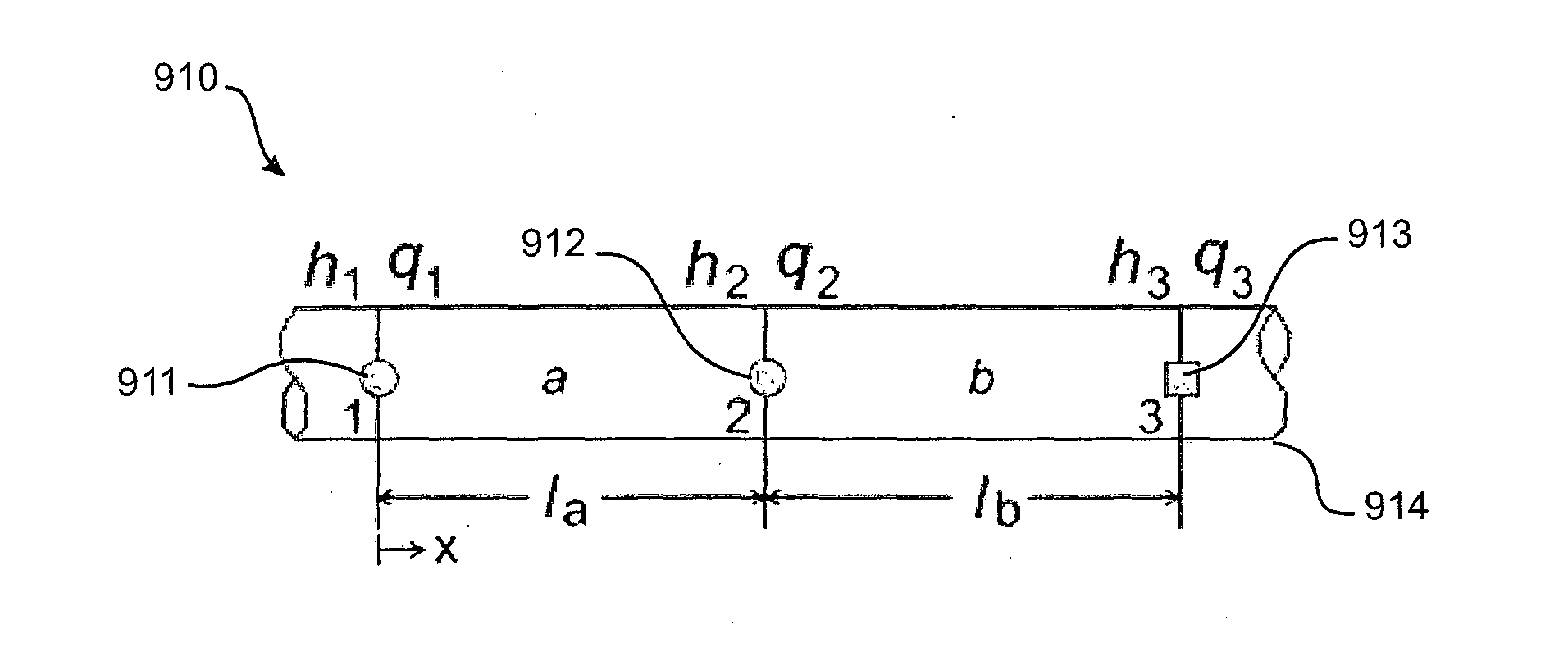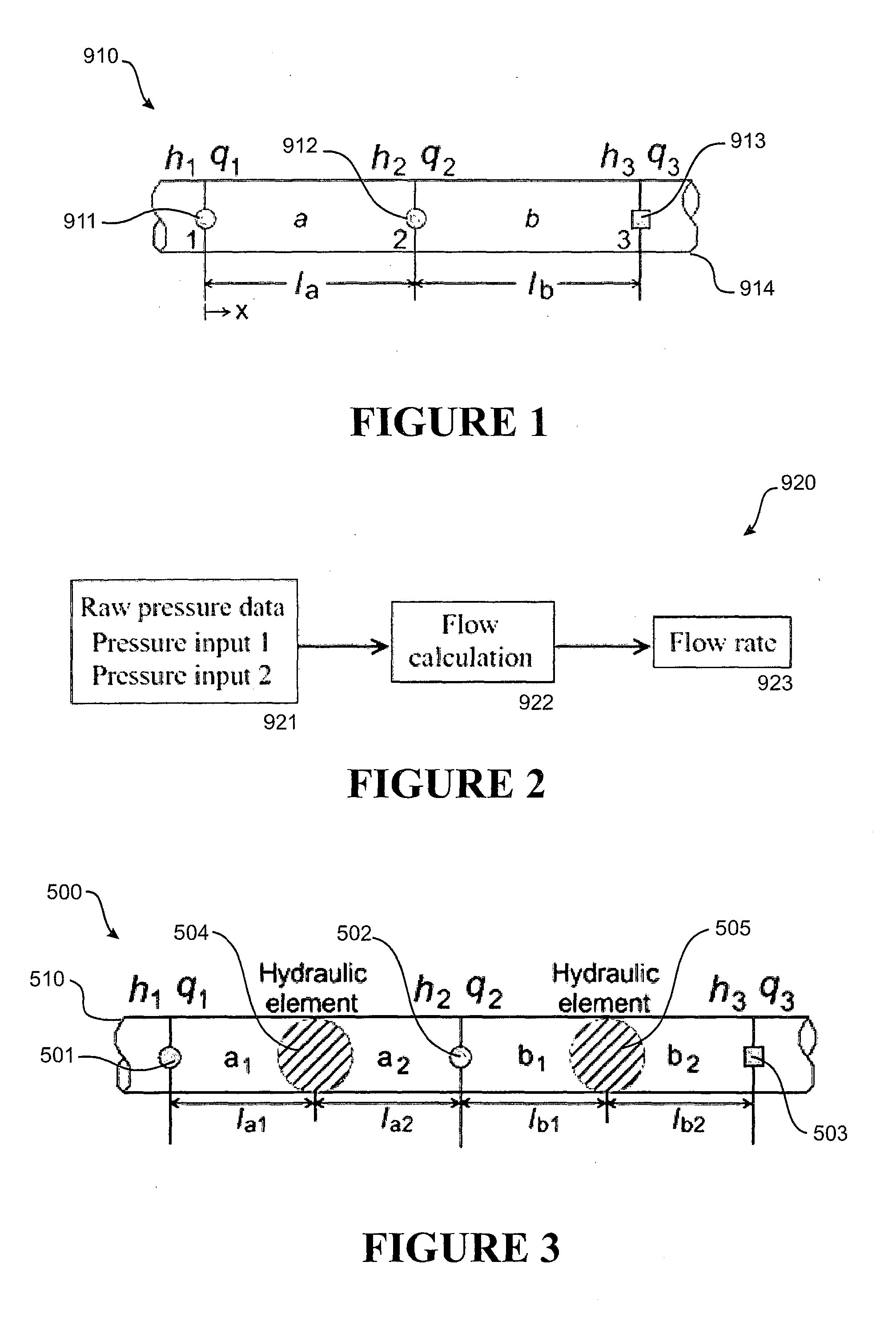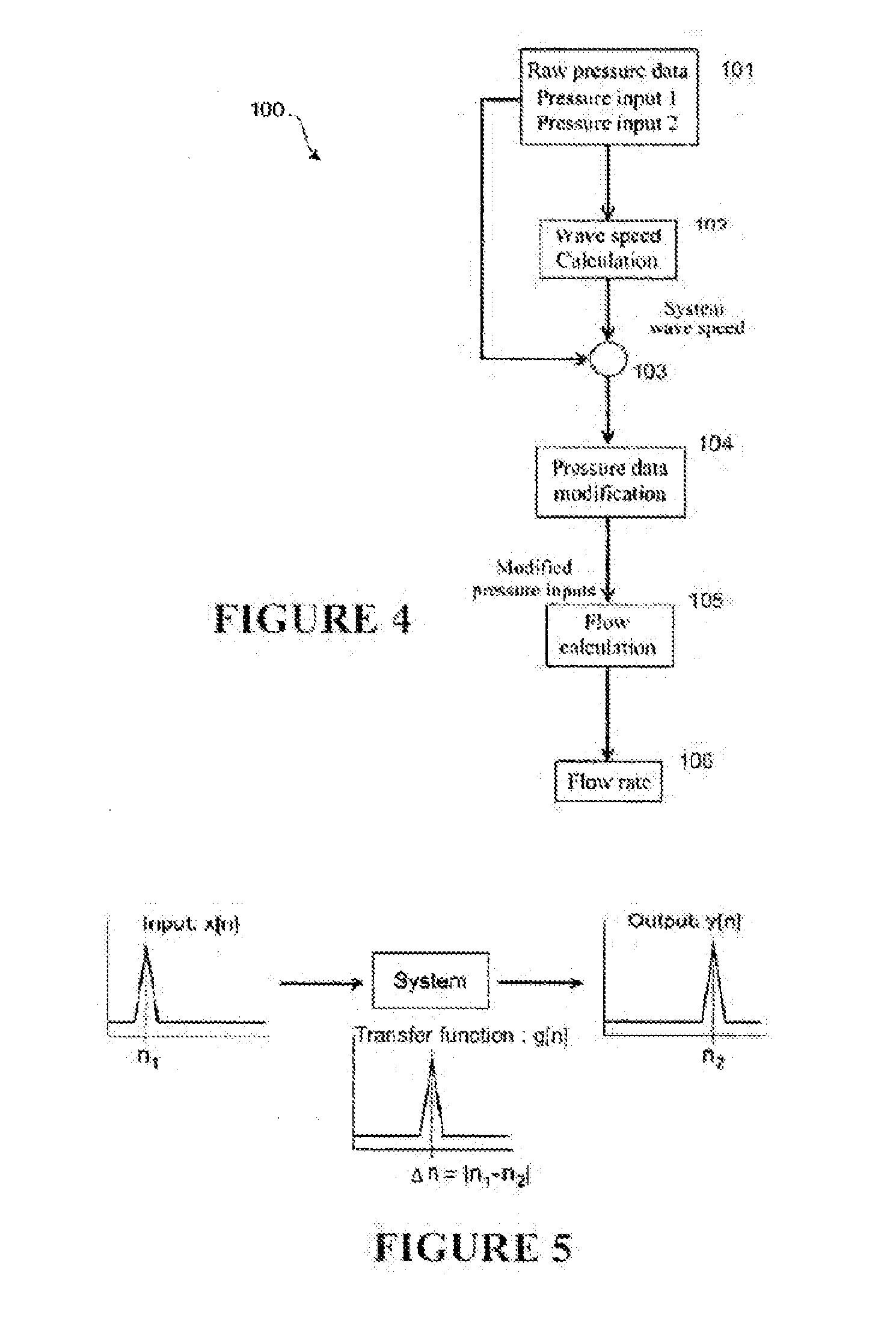Flow rate determination method and apparatus
a flow rate and flow direction technology, applied in the direction of direct flow property measurement, measurement devices, instruments, etc., can solve the problems of inconvenient flow rate measurement, insensitive hot-wire method to the flow direction of fluid in the pipeline, and high cost of flow rate measurement errors
- Summary
- Abstract
- Description
- Claims
- Application Information
AI Technical Summary
Benefits of technology
Problems solved by technology
Method used
Image
Examples
experiment 1
[0444]The method of the present invention is verified using a pipeline system shown in FIG. 11. The system consists of a pipeline of length L which is bounded by constant head reservoirs. The system contains a signal generator at the middle of the system. Pressure is recorded at two points h1 and h2 which are separated by the dimensionless distance of 0.1. The frequency of the pressure measurement is 500 Hz. In all tests, the theoretical wave speed is 1000 m / s.
[0445]The measured pressure from the transducer at h2 closer to the generator g is regarded as the input x[n] and the other measured pressure from the transducer at h1 is considered as the output y[n] from the system which, in this case, is the pipe section between the two pressure measurement points.
[0446]Both continuous and discrete signals were used to test the algorithm. The size of both signals was 10% of the steady flow rate. The transfer function of the system was determined using these signals and it is presented in FI...
experiment 2
[0456]In a second experiment, the experimental verification of the method of the present invention is carried out on a pipeline system similar to the system described above with reference to FIG. 11. The system consists of a stainless steel pipeline having 41.6 m length and a diameter of 22.25 mm. The pipe is bounded by pressurised tanks that are part filled with water and where the pressures within each tank are maintained through the injection of compressed air. The pressure in the tanks is adjusted to create laminar and turbulent flow conditions. The inline valve at the downstream end of the system is closed to establish a static steady state condition.
[0457]Controlled flow perturbations for the validation of the method are introduced using two hydraulic devices; an electronically controlled solenoid valve and a manually operated side discharge valve which are located 8.5 m from the downstream reservoir. The solenoid valve has a flow diameter of 1.6 mm and the side discharge valv...
experiment 2a
State Flow Condition
[0462]Under the static steady state condition, four different pulse sizes were used: Size 1=1.4×10−5 l m3 / s, Size 2=1.5×10−5 m3 / s, Size 3=1.9×10−5 m3 / s, and Size 4=2.4×10−5 m3 / s. These flow rates are average flow rates out of the solenoid valve which are estimated from the measured discharge volume and the pulse duration. The choice of the pulse site is governed by the limitations of the solenoid valve.
[0463]The errors are summarised in Table 2. The results show that the average error across all pulse sizes is in the order of 0.1%. The method captures the maximum flow rate well but the error in the pulse profile was relatively large for all pulse sizes. The largest error in these tests was 2.0% for the biggest pulse size and the errors were found to generally increase with the pulse magnitude.
TABLE 2Summary of percentage errors in the flow predictions of different flowpulse magnitudesPulse sizeEVolumeEMaxEProfileSize 13.78 × 10−33.37 × 10−38.14 × 10−3Size 28.10 ×...
PUM
 Login to View More
Login to View More Abstract
Description
Claims
Application Information
 Login to View More
Login to View More - R&D
- Intellectual Property
- Life Sciences
- Materials
- Tech Scout
- Unparalleled Data Quality
- Higher Quality Content
- 60% Fewer Hallucinations
Browse by: Latest US Patents, China's latest patents, Technical Efficacy Thesaurus, Application Domain, Technology Topic, Popular Technical Reports.
© 2025 PatSnap. All rights reserved.Legal|Privacy policy|Modern Slavery Act Transparency Statement|Sitemap|About US| Contact US: help@patsnap.com



